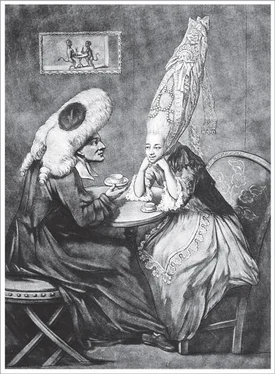Bill Bryson - At Home
Здесь есть возможность читать онлайн «Bill Bryson - At Home» весь текст электронной книги совершенно бесплатно (целиком полную версию без сокращений). В некоторых случаях можно слушать аудио, скачать через торрент в формате fb2 и присутствует краткое содержание. Жанр: Старинная литература, на английском языке. Описание произведения, (предисловие) а так же отзывы посетителей доступны на портале библиотеки ЛибКат.
- Название:At Home
- Автор:
- Жанр:
- Год:неизвестен
- ISBN:нет данных
- Рейтинг книги:4 / 5. Голосов: 1
-
Избранное:Добавить в избранное
- Отзывы:
-
Ваша оценка:
- 80
- 1
- 2
- 3
- 4
- 5
At Home: краткое содержание, описание и аннотация
Предлагаем к чтению аннотацию, описание, краткое содержание или предисловие (зависит от того, что написал сам автор книги «At Home»). Если вы не нашли необходимую информацию о книге — напишите в комментариях, мы постараемся отыскать её.
At Home — читать онлайн бесплатно полную книгу (весь текст) целиком
Ниже представлен текст книги, разбитый по страницам. Система сохранения места последней прочитанной страницы, позволяет с удобством читать онлайн бесплатно книгу «At Home», без необходимости каждый раз заново искать на чём Вы остановились. Поставьте закладку, и сможете в любой момент перейти на страницу, на которой закончили чтение.
Интервал:
Закладка:
By chance, an Oxford scholar, the Reverend George Neville, master of Magdalen College, saw Macpherson’s passing reference to Pepys’s diaries and grew intrigued to know what else might be in them. Pepys after all had lived through momentous times—through the restoration of the monarchy, the last great plague epidemic, the Great Fire of London of 1666—so their content was bound to be of interest. He commissioned a clever but penurious student named John Smith to see if he could crack the code and transcribe the diaries. The work took Smith three years. The result of course was the most celebrated diary in the English language. Had Pepys not had that cup of tea, Macpherson not mentioned it in a dull history, Neville been less curious, and young Smith less intelligent and dogged, the name Samuel Pepys would mean nothing to anyone but naval historians, and a very considerable part of what we know about how people lived in the second half of the seventeenth century would in fact be unknown. So it was a good thing that he had that cup of tea.
Normally, like most other people of his class and period, Pepys drank coffee, though coffee itself was still pretty novel in 1660. Britons had been vaguely familiar with coffee for decades but principally as a queer, dark beverage encountered abroad. A traveler named George Sandys in 1610 grimly described coffee as being “blacke as soot, and tasting not much unlike it.” The word was spelled in any number of imaginative ways— coava, cahve, cauphe, coffa , and cafe , among others—before finally coming ashore as coffee in about 1650.
Credit for coffee’s popularity in England belongs to a man named Pasqua Rosee, Sicilian by birth and Greek by background, who worked as a servant for Daniel Edwards, a British trader in Smyrna, now Izmir, in Turkey. Moving to England with Edwards, Rosee served coffee to Edwards’s guests, and this proved so popular that he was emboldened to open a café—the first in London—in a shed in the churchyard of St. Michael Cornhill in the City of London in 1652. Rosee promoted coffee for its health benefits, claiming that it cured or prevented headaches, “defluxion of rheums,” wind, gout, scurvy, miscarriages, sore eyes, and much else.
Rosee did very well in his business, but his reign as premier coffee-maker didn’t last long. Sometime after 1656, he was compelled to leave the country “for some misdemeanour,” which the record unfortunately doesn’t specify. All that is known is that he departed suddenly and was heard of no more. Others swiftly moved in to take his place. By the time of the Great Fire, London’s eighty-plus coffeehouses had become a central part of the life of the city.
The coffee served in the coffeehouses wasn’t necessarily very good coffee. Because of the way coffee was taxed in Britain (by the gallon), the practice was to brew it in large batches, store it cold in barrels, and reheat it a little at a time for serving. So coffee’s appeal in Britain had less to do with being a quality beverage than with being a social lubricant. People went to coffeehouses to meet people of shared interests, gossip, read the latest journals and newspapers—a brand-new word and concept in the 1660s—and exchange information of value to their lives and business. Some took to using coffeehouses as their offices—as, most famously, at Lloyd’s Coffee House on Lombard Street, which gradually evolved into Lloyd’s insurance market. William Hogarth’s father hit on the idea of opening a coffeehouse in which only Latin would be spoken. It failed spectacularly —toto bene , as Mr. Hogarth himself might have said—and he spent years in debtors’ prison in unhappy consequence.
Although pepper and spices were what brought the East India Company into being, the company’s destiny was tea. In 1696, the government introduced the first in a series of cuts in the tea tax. The effect on consumption was immediate. Between 1699 and 1721, tea imports increased almost a hundredfold, from 13,000 pounds to 1.2 million pounds, then quadrupled again in the thirty years to 1750. Tea was slurped by laborers and daintily sipped by ladies. It was taken at breakfast, dinner, and supper. It was the first beverage in history to belong to no class, and the first to have its own ritual slot in the day: teatime. It was easier to make at home than coffee, and it also went especially well with another great gustatory treat that was suddenly becoming affordable for the average wage earner: sugar. Britons came to adore sweet, milky tea as no other nation had (or even perhaps could). For something over a century and a half, tea was at the heart of the East India Company, and the East India Company was at the heart of the British Empire.
Not everyone got the hang of tea immediately. The poet Robert Southey related the story of a lady in the country who received a pound of tea as a gift from a city friend when it was still a novelty. Uncertain how to engage with it, she boiled it up in a pot, spread the leaves on toast with butter and salt, and served it to her friends, who nibbled it gamely and declared it interesting but not quite to their taste. Elsewhere, however, it raced ahead, in tandem with sugar.
The British had always loved sugar, so much so that when they first got easy access to it, about the time of Henry VIII, they put it on or in almost everything from eggs to meat to wine. They scooped it onto potatoes, sprinkled it over greens, and ate it straight off the spoon if they could afford to. Even though sugar was very expensive, people consumed it till their teeth turned black, and if their teeth didn’t turn black naturally, they blackened them artificially to show how wealthy and marvelously self-indulgent they were. But now, thanks to plantations in the West Indies, sugar was becoming increasingly affordable, and people were discovering that it went particularly well with tea.
Sweet tea became a national indulgence. By 1770, per capita consumption of sugar was running at 20 pounds a head, and most of that, it seems, was spooned into tea. (That sounds like quite a lot until you realize that Britons today eat 80 pounds of sugar per person annually, while Americans pack away a decidedly robust 126 pounds of sugar per head.) As with coffee, tea was held to confer health benefits; among much else, it was said that it “assuageth the pains of the Bowels.” A Dutch doctor, Cornelius Bontekoe, recommended drinking fifty cups of tea a day—and in extreme cases as many as two hundred—in order to keep oneself sufficiently primed.
Sugar also played a big role in a less commendable development: the slave trade. Nearly all the sugar Britons consumed was grown on West Indian estates worked by slaves. We have a narrow tendency to associate slavery exclusively with the plantation economy of the southern United States, but in fact plenty of other people got rich from slavery, not least the traders who shipped 3.1 million Africans across the ocean before the United Kingdom abolished the trade in humans in 1807.
Tea was adored and esteemed not just in Great Britain but also in her overseas dominions. Tea was taxed in America as part of the hated Townshend duties. In 1770, these duties were repealed on everything but tea in what proved to be a fatal misjudgment. They were kept on tea partly to remind colonists of their subjugation to the crown and partly to help the East India Company out of a deep and sudden hole. The company had become hopelessly overextended. It had accumulated seventeen million pounds of tea—a huge amount of a perishable product—and, perversely, had tried to create an air of well-being by paying out more in dividends than it could really afford. Bankruptcy loomed unless it could reduce its stockpiles. Hoping to ease it through the crisis, the British government gave the company an effective monopoly on tea sales in America. Every American knows what happened next.
Читать дальшеИнтервал:
Закладка:
Похожие книги на «At Home»
Представляем Вашему вниманию похожие книги на «At Home» списком для выбора. Мы отобрали схожую по названию и смыслу литературу в надежде предоставить читателям больше вариантов отыскать новые, интересные, ещё непрочитанные произведения.
Обсуждение, отзывы о книге «At Home» и просто собственные мнения читателей. Оставьте ваши комментарии, напишите, что Вы думаете о произведении, его смысле или главных героях. Укажите что конкретно понравилось, а что нет, и почему Вы так считаете.












